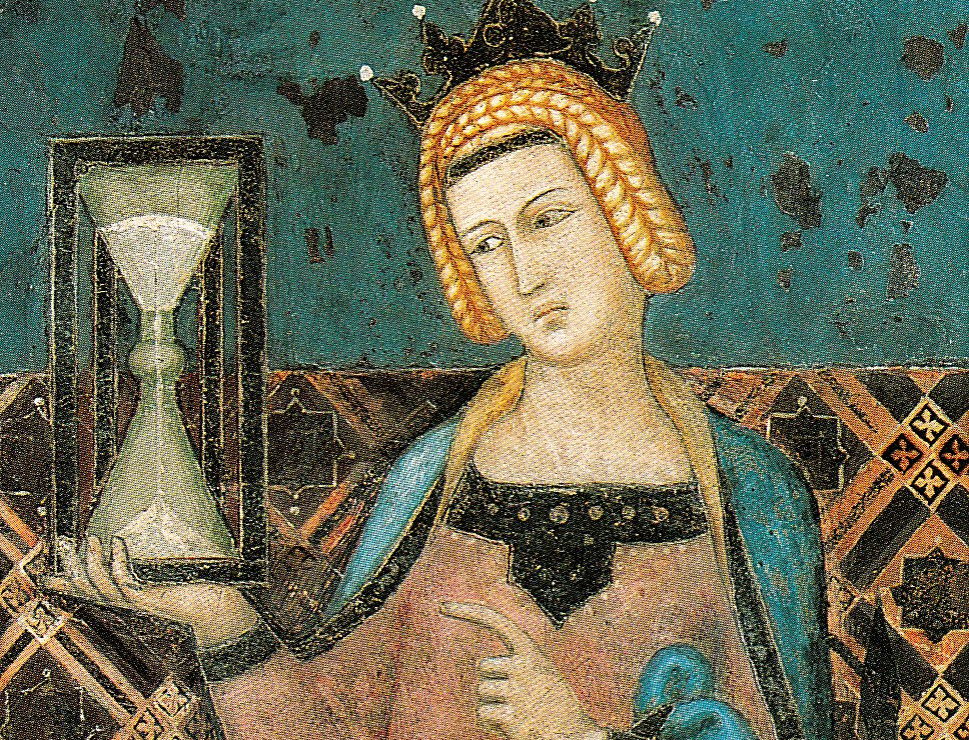Tick Tock | History Today - 5 minutes read

The slow drag of time – when we’re stuck on hold to a call centre or sitting through another interminable online meeting – may feel like a feature of modern life, but it was familiar to Geoffrey Chaucer. His tragic hero Troilus, forced to wait ten days to be reunited with his beloved Criseyde, feels his world decelerating: ‘the dayes moore and lenger every night’. Yet if we’re tempted to assume that for Chaucer and other medieval people time was simply less scientific than for us, we need only remind ourselves that this ‘Father of English Literature’ also wrote a manual for the most popular timekeeping device of the Middle Ages: the astrolabe. Addressed to his ten-year-old son Lewis, the treatise, entitled Bread and Milk for Children in early manuscript copies, signalled Chaucer’s desire to bring the precise science of time to as wide an audience as possible.
Such contrasting conceptions of time are evocatively and accessibly detailed in this new work by two eminent Chaucer scholars, published as part of Reaktion’s Medieval Lives series. Across a succinct 214 pages Gillian Adler and Paul Strohm convey the complexity and sophistication with which medieval people considered the passing – or cycling, or climaxing – days. In the 1960s the French historian Jacques Le Goff drew attention to the multiplicity of medieval timeframes, juxtaposing ‘merchant’s time’ with ‘church time’; Alle Thyng Hath Tyme joins other recent works – most notably Matthew Champion’s The Fullness of Time (2017) – in adding nuance to this picture, showing how writers and artists could simultaneously hold and communicate several different, dissonant temporalities.
Adler and Strohm take the broadest possible view of time. Perhaps the most captivating chapters of the book, where they make highly effective use of its wonderful full-colour illustrations, are those dealing with subjects such as the ages of mankind, the wheel of fortune, and Death. ‘In the midst of life we are in death’, went the popular medieval antiphon; with examples including Boethius and Boccaccio, Dante and The Dance of Death, the authors evocatively link the arbitrary whims of Lady Fortune, the foreboding Father Time, the ages of man from innocence to senility, and the cavorting skeletons of the danse macabre. A particularly interesting section covers the ages of woman, which draws on literary and real-life examples of maidens and mothers, wives and widows, to show how women lived within – and sometimes rejected – a gendered timeline. Such rejection also appears earlier in the book, when Adler and Strohm describe the ‘freewheeling temporalities’ of Julian of Norwich. Her dizzying visions transport this Norwich anchoress from the specific month of May 1373 to the time of Christ, from precisely measured moments to the span of eternity.
Julian records the start of her first vision ‘erly on the morn’. But rather than giving the time with reference to sunrise, or stating that it came between, say, the liturgical offices of Lauds or Prime, she states that it began ‘about the howr of fowr’. This seems to be a reference to the clock time that spread across the cities of Europe in the 14th century, and which would have been audible to Julian from the clockwork-driven chimes of bells in the tower of Norwich cathedral, half a mile from her cell. The rise of the mechanical clock is perhaps the greatest technological change of the Middle Ages, but it presents challenges for historians. In the first place, early clocks were often replaced and upgraded, with metal parts melted down and recycled, so little material evidence survives. The documentary evidence can be problematic too, not least because the Latin word for clock, horologium, was also used for quite different timekeeping devices, such as sundials and clepsydra (water-clocks). Yet the development and spread of the mechanical clock, and its use alongside other timekeeping technologies, is a fascinating and important story that deserves consideration. Why, for example, did astrolabes continue to grow in popularity for 250 years after the invention of the mechanical clock?
Adler and Strohm do not address such historical issues. Since their central argument is that ‘storytelling and narration require a commitment to time’s unfolding [and hence] the greatest medieval narratives are inseparable from their theories of time’, their focus is on those great works of literature; the function of time in the medieval imagination looms larger than its practical place in people’s lives. While the authors dedicate a section to the ‘revolution’ of mechanical clock-making, it jumps backwards and forwards chronologically, making it tricky for readers to get a sense of the device’s development; they do not delve into the details of the ‘unequal’ seasonal hours or the cutting-edge astronomical calendars. Practical medieval uses of time receive rather brisk treatment: we do not encounter everyday systems like the ‘fish time’ – the complex intersection of religious fasting with hygiene regulations that affected which catch could be sold when, from which stalls – that Champion identified in the market of 15th-century Leuven. Nor do we encounter the way medieval people routinely measured time by distance – and vice versa – as outlined in Robert Bartlett’s The Hanged Man (2004). And the visually stunning genealogical universal histories (highlighted in recent work by Laura Cleaver and others) might have merited inclusion in the fascinating section on ‘World-Time’.
But perhaps to leave the reader wanting more is precisely the point of these slim Reaktion volumes. This one, beautifully produced – whose excellent index more than compensates for the cheap-feeling shiny paper – certainly has plenty to excite any readers or students wanting a new perspective on the canon of medieval literature.
Alle Thyng Hath Tyme: Time and Medieval Life
Gillian Adler and Paul Strohm
Reaktion, 248pp, £16.95
Buy from bookshop.org (affiliate link)
Seb Falk is a Fellow of Girton College, Cambridge, and author of The Light Ages: A Medieval Journey of Discovery (Penguin, 2020).
Source: History Today Feed